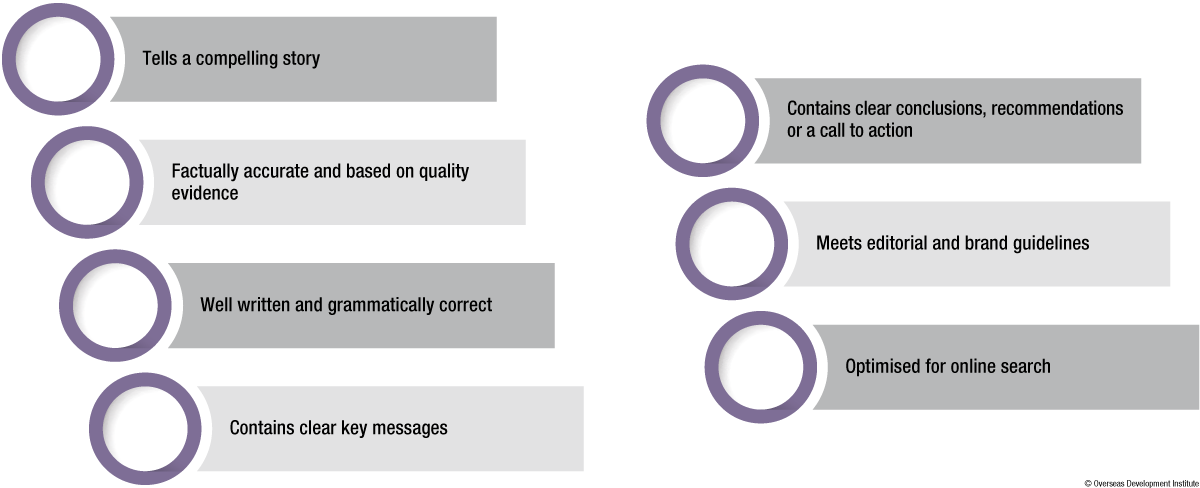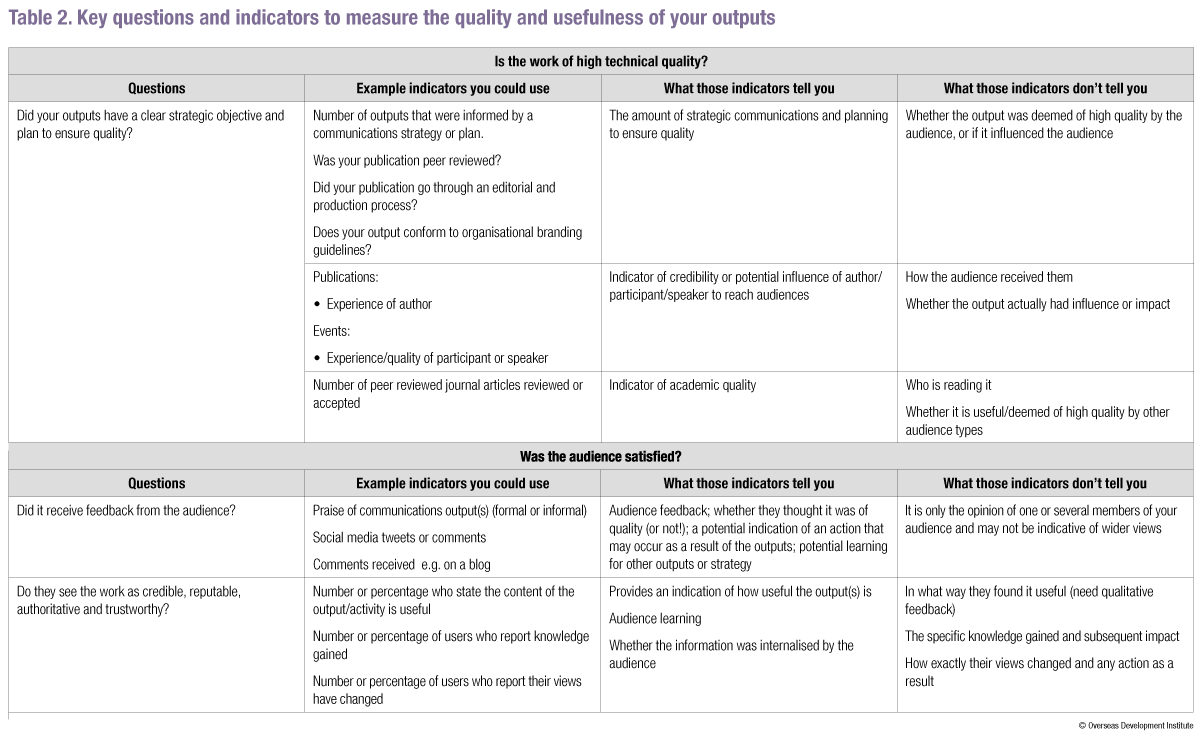How to measure the quality and usefulness of your outputs
Definition of quality: For the purpose of this guide, quality can be defined as the technical standard of work, both the content and presentation. This is closely linked to usefulness and audience reception.
As part of your communications strategy or plan, you will routinely need to assess the quality of outputs. Even for small projects, the team should assess whether the output (e.g. report, brief, video, presentation) does the following:
Definition of usefulness: ‘The quality of information and outputs that is appropriate, applicable, and practical. Usefulness may include such aspects as user satisfaction, quality, innovation, and relevance.’
Usefulness takes communications MEL to the next level and starts to unpick both the quality of your outputs and the user reception. This can be useful both for internal learning, to ensure the quality of outputs (and to adapt them as necessary), but also for assessing if your audience has interacted with your work in some way. By no means an easy feat. Nonetheless, this guide outlines some useful ways to go about trying to find out this data from audiences and in your project or team. Usefulness can also be viewed as a type of ‘initial outcome’.
Examples of what you can use this information for:
- to track quality or user satisfaction for outputs
- to understand what type of outputs work for different audiences in more depth.
Example tools to gather the data:
- Feedback forms or surveys
- Google search
- Internal feedback log

